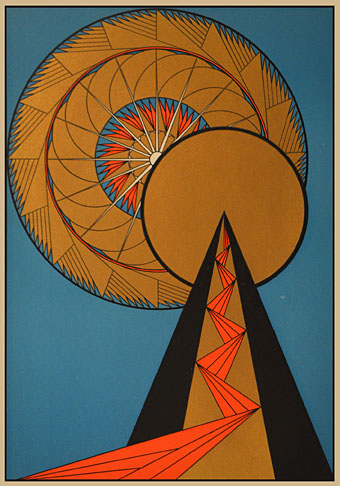
The Central Spiritual Sun.
This picture appears on the cover of an album of electronic music, The Golden Apples Of The Sun by Suzanne Ciani and Jonathan Fitoussi, which was released last Friday. Being already partial to the music of both Ms Ciani and Monsieur Fitoussi I’ve been enjoying this one (although there’s no CD…bah), and was curious about the cover art which I took at first for a contemporary creation. The artist, Olga Fröbe-Kapteyn (1881–1962) was born in the Netherlands but spent most of her life in Zurich where she was friends with Carl Jung, Richard Wilhelm and other mystically-inclined intellectuals, and where she formed Eranos (later the Eranos Foundation), a conference/institute for the exchange of ideas between West and East.
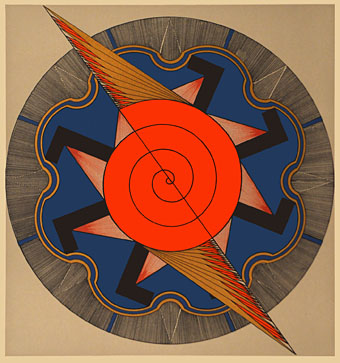
Eternal Energy.
Fröbe-Kapteyn wasn’t a full-time artist, the screenprints she made in the 1930s appear to be an offshoot of her researches into archetypal symbolism, but she had an evident flair for this kind of image making. The Central Spiritual Sun is one of a series of 14 prints which are described as “Theosophist” although I can’t vouch for the accuracy of this. At least one of them (Kether, The Crown) refers to the Kabbalah, while several others have obvious Christian qualities. For those who like the Ciani/Fitoussi cover art, there’s an edition of the vinyl release of The Golden Apples Of The Sun that comes with a poster reproduction.
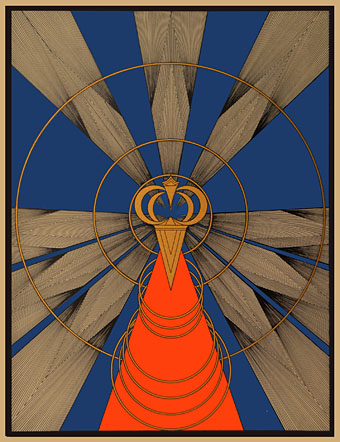
Kether, The Crown.
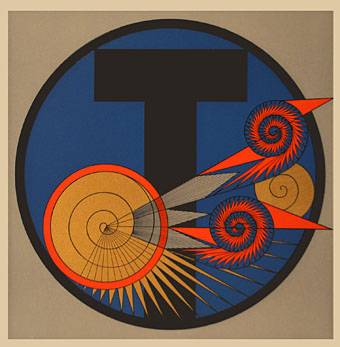
Reincarnation.
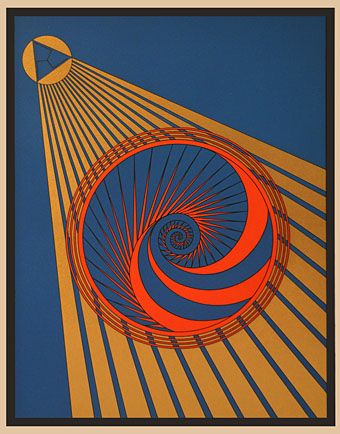
The Divine Breath.
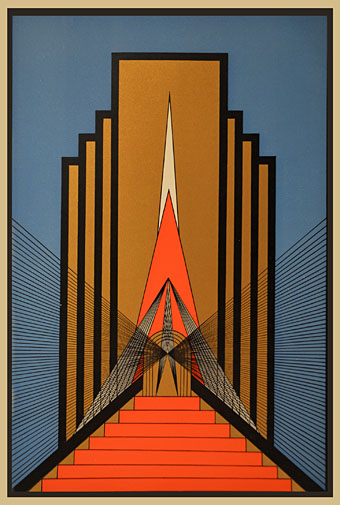
The Portal of Initiation.
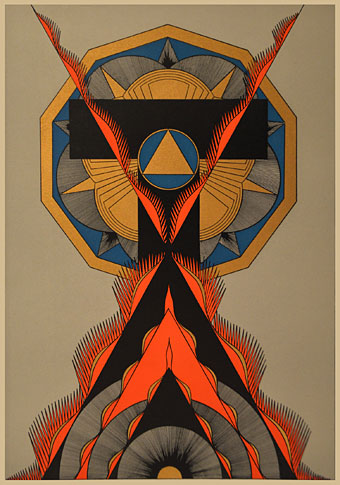
The Way of the Cross.
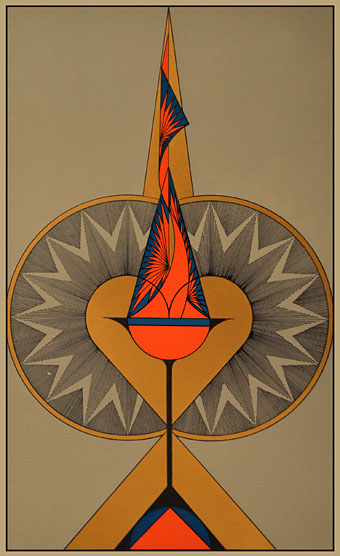
The Chalice in the Heart.
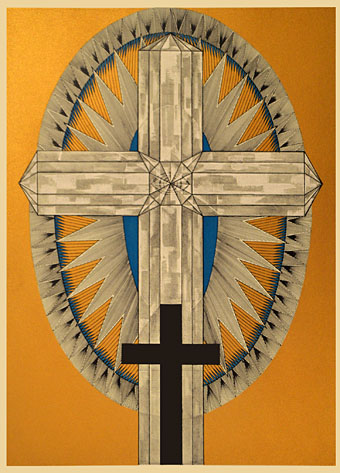
The Cosmic Incarnation.
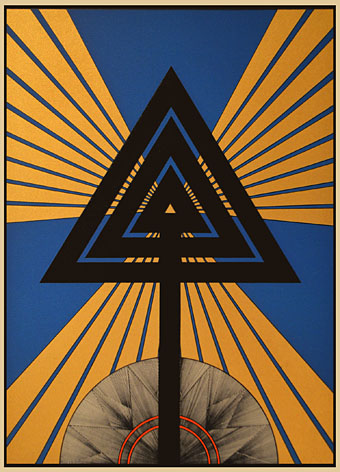
The Creation.
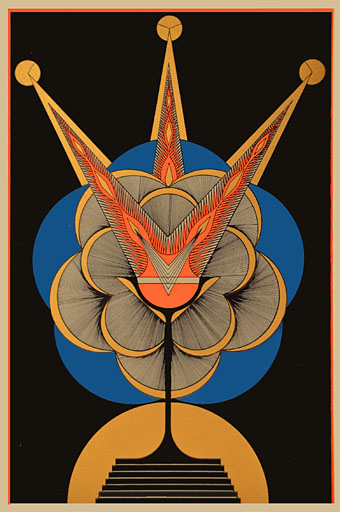
The Grail.
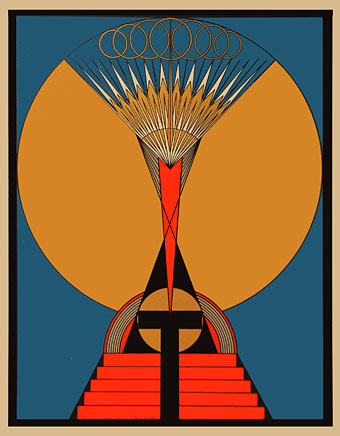
The Light of the Soul.
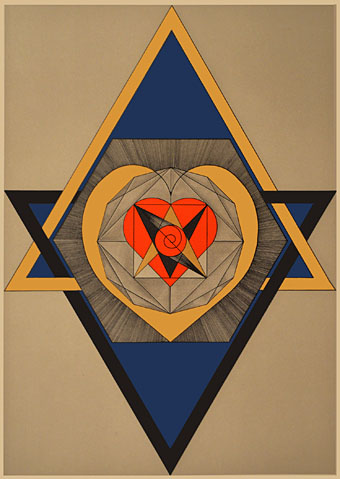
The Mystery of Life.
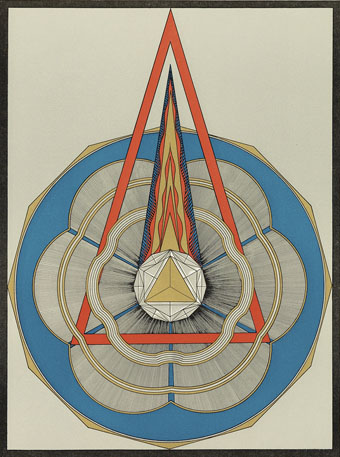
Om Mani Padme Hum.
Previously on { feuilleton }
• Hidden Hands: A Different History of Modernism
• Synthesizing
• Golden apples and silver apples

It seems more and more artists these days are abandoning the CD for digital downloads and vinyl. Is it the cost of manufacture? Hard to see how it would be less expensive to produce a vinyl release. So what explains the animus towards the compact disk? I download music all the time but sometimes you want the hard copy.
I listen to music all the time when I’m working so CD has always been better in the way that you get to hear a whole album without having to change the side halfway through. That’s even before you get to audio quality. I have an expensive pair of Sennheiser headphones, and prefer to hear things without any accompanying snap, crackle and pop.
Beyond this, it’s anyone’s guess why labels don’t do CDs but I think vinyl snobbery is a lot to do with it. Vinyl fetishism was endemic in DJ culture years before the current trend for prioritising the format. The irony is that in the 1980s vinyl was seen as the format of the common horde, while CD (especially in the music papers) was regarded as a prissy, bourgeois thing for people who cared more about audio quality than music. The situation is now the complete reverse; go to any page on Discogs where an album has recently been reissued on vinyl and *all* the latest reviews will be about the audio quality of the new pressing, with no mention of the music at all. Vinyl is now the format for people with money: it costs more to buy, and more to play if you have to invest in good/better hi-fi gear, plus a new stylus every year. The final irony is that most new vinyl is mastered from digital sources anyway–something that was never the case up to 1980–and every purchase is a gamble as to whether or not you get a good pressing. Discogs again is filled with interminable discussion about this. I find the whole situation ridiculous. Just give me a CD and let me enjoy the music, please.
Re: the costs, CD is still a cheap medium which is why labels like Cherry Red still put out most of their reissues on CD. Same with magazines that give away free discs. Anyone avoiding them is most likely doing so for ideological rather than economic reasons.
Image nr 12 (The Grail) was used on the cover of the first edition of Michael Bertiaux’s weird & wonderful occult ultraclassic Voudon Gnostic Workbook.
That’s a surprise, I would have expected one of Bertiaux’s own paintings to be used as cover art.